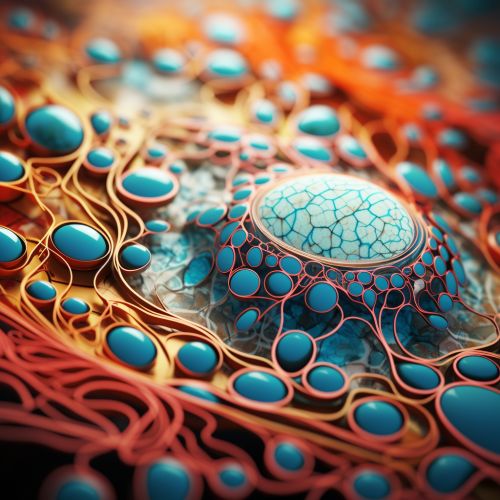Lipid Metabolism
Overview
Lipid metabolism is the process by which lipids are synthesized and degraded in cells. Lipids are a group of naturally occurring molecules that include fats, waxes, sterols, fat-soluble vitamins (such as vitamins A, D, E, and K), monoglycerides, diglycerides, triglycerides, phospholipids, and others. The main biological functions of lipids include storing energy, signaling, and acting as structural components of cell membranes.


Lipid Synthesis
Lipid synthesis, also known as lipogenesis, is the process by which acetyl-CoA is converted to triglycerides for storage in the adipose tissue. Lipogenesis primarily occurs in the liver and adipose tissue, where energy is abundant. The process begins with the conversion of acetyl-CoA to malonyl-CoA by the enzyme acetyl-CoA carboxylase. Malonyl-CoA is then used as a substrate for the synthesis of fatty acids.
Fatty Acid Synthesis
Fatty acid synthesis is the creation of fatty acids from acetyl-CoA and NADPH through the action of enzymes called fatty acid synthases. This process takes place in the cytoplasm of the cell. The major product of fatty acid synthesis is palmitate, a 16-carbon saturated fatty acid.
Triglyceride Synthesis
Triglyceride synthesis occurs in the endoplasmic reticulum by metabolic pathways in which acyl groups in fatty acyl-CoA are transferred to the hydroxyl groups of glycerol-3-phosphate. Triglycerides are then packaged with cholesterol and proteins to form lipoproteins, which can be transported through the bloodstream.
Lipid Degradation
Lipid degradation, also known as lipolysis, is the process of breaking down stored triglycerides into glycerol and fatty acids. This process is regulated by various hormones, including insulin, glucagon, and epinephrine.
Fatty Acid Oxidation
Fatty acid oxidation, also known as beta-oxidation, is the metabolic process by which fatty acids are broken down in the mitochondria to generate acetyl-CoA, which enters the citric acid cycle, and NADH and FADH2, which are co-enzymes used in the electron transport chain. It consists of a cycle of four reactions.
Ketogenesis
When the rate of fatty acid oxidation is high, especially during periods of fasting or prolonged exercise, the liver produces ketone bodies in a process called ketogenesis. Ketone bodies are water-soluble molecules that include acetoacetate, beta-hydroxybutyrate, and their spontaneous breakdown product, acetone.
Regulation of Lipid Metabolism
The regulation of lipid metabolism is complex and involves a balance between lipid synthesis and degradation. It is influenced by various hormones, including insulin, glucagon, and epinephrine, as well as by dietary intake and energy expenditure.
Disorders of Lipid Metabolism
Disorders of lipid metabolism can lead to a variety of health problems, including atherosclerosis, coronary artery disease, and obesity. These disorders can be caused by genetic factors, dietary intake, and lifestyle factors.
